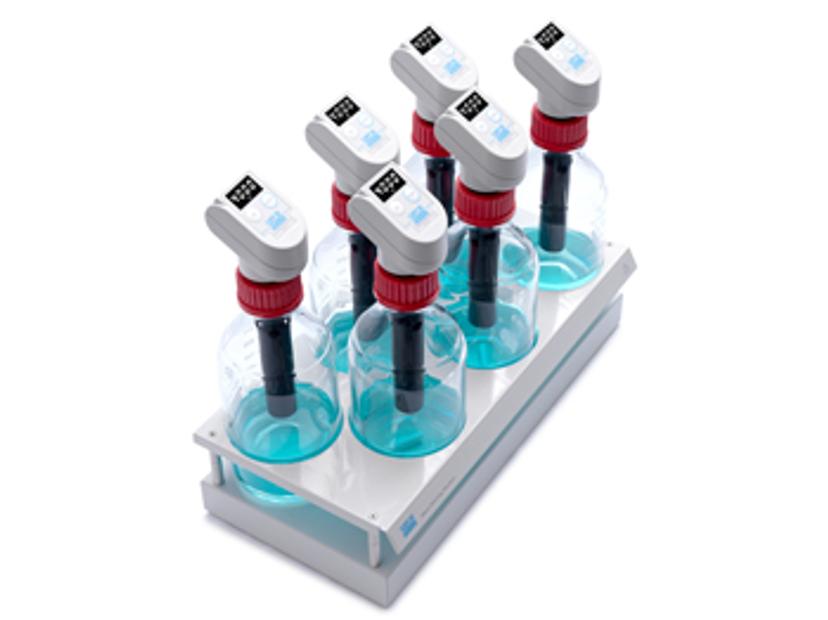Biochemical methane potential: Anaerobic digestion for a renewable and programmable source of energy
4 May 2021

Waste and wastewater treatment has required huge investment across countries in recent decades and can involve multiple chemical, biological or physical processes. Anaerobic Respirometric Analysis is becoming very popular for waste management. Many units are being built and operated and even in developing countries, it’s becoming very interesting, especially from the point of view of renewable energy resource.
Why BMP tests?
Biochemical methane potential (BMP) tests are used to determine the ultimate methane yield of organic substrates, providing an indication of their biodegradability and their potential to produce methane via anaerobic digestion. BMP tests are commonly used to:
- Establish a baseline to evaluate performances of full-scale anaerobic digesters;
- Define anaerobic digester operational parameters in order to optimize methane production;
- Assess substrate quality and predict methane production by full-scale biogas plants;
- Investigate the effect of pre-treatment on methane potential or production rate;
- Evaluate the performance of the biomass, for example, the hydrolytic activity of the inoculum;
- Estimate residual methane emission to the atmosphere after digestion, by measuring the residual BMP of digestate.
What is a BMP test?
The Biochemical Methane Potential (BMP) test is a batch experiment used to determine the maximum methane potential and biodegradability of an organic substrate. During the test, the substrate is mixed with an anaerobic bacteria culture (the inoculum), normally retrieved from an active digester. Optimal conditions for the completion of the process (temperature, mixing, nutrients, pH, alkalinity) must be ensured for the whole duration of the experiment.
Biogas, mainly composed of methane and carbon dioxide, is produced during the testing period due to the anaerobic degradation of organic contents of the substrate. Carbon dioxide (acidic gas) can be removed by chemical absorption with alkaline chemicals/chemical solutions: the methane generated from the substrate is then measured and referred to as the mass of volatile solids or to the chemical oxygen demand (COD) of substrate added in the test vessel, which is called the biochemical methane potential of the substrate.
Which are the aims of the anaerobic digestion plants?
The BMP analysis studies the production of biogas from organic wastes mainly for:
Waste and wastewater treatment:
The aim is to treat the waste and wastewaters in order to reduce the organic content. The anaerobic digestion process is able to reduce the level of organic contamination of the treated matrices, whether these are sewage sludge, industrial waste, or agrozootechnical waste.
Renewable energy production:
To have the production from these plants of renewable energy. The production of methane is used to generate heat or electricity from wastes produced in several industries:
- Food sectors
- Organic waste disposal
- Agro-zootechnical sector

BMP determination with VELP RESPIROMETRIC Sensors
VELP has developed an innovative solution for the analysis of Biochemical Methane Potential in different matrices. The RESPIROMETRIC Sensor System Maxi is designed to support anaerobic respiration studies to determine the Biochemical Methane Potential (BMP) of biomass.
The laboratory analysis requires setting up bottles in anaerobic conditions. The volume of the produced methane is regularly measured. The biogas industry needs this analysis, to evaluate waste field potential and to characterize biogas plant inputs.
The RESPIROMETRIC Sensor System Maxi is composed of glass bottles with a working volume of 1 liter, complete with valves, flow meters, and manometric measuring systems for the quantification of the biogas produced. The test is carried on constant conditions of temperature, ensured by a thermostatic system at 35-37 ± 0.5 ° C, like our FOC Connect Series, and a constant stir of the solution, ensured by the stirring station.
How to perform BMP analysis with VELP solutions
Once the test has started, as the degradation process proceeds, biogas will be produced in the bottle which can be quantified in terms of overpressure generated. CO2 produces is absorbed by Alkaly (KOH) thus the overpressure depends just on the methane produced (CH4). The RESPIROSoft™, the unique VELP solution ensures constant monitoring of multiple analyses from intuitive proprietary software and is able to give the BMP value directly.
There is not a fixed duration, in general, the BMP test lasts about 30 days but can be extended if the degradation of the substrate is particularly slow. There is a general rule: we can accept the end of the analysis when the daily production of methane for 3 consecutive days is less than 1% of the total methane gas produced cumulatively up to that day.
All tests are carried out according to the UNI UNI/TS 11703.

RESPIROMETRIC Sensor System Maxi - BMP
- The RESPIROMETRIC Sensor System Maxi BMP comes ready to use with all the required accessories and parts to perform the BMP analysis:
- RESPIROMETRIC Sensors with Bottles and Stirring bars (x6)
- Maxi Stirring Station 6
- DataBoxTM
The VELP DataBoxTM is also included in the System together with the RESPIROSoftTM Software and enables wireless data transmission from the RESPIROMETRIC Sensor to the PC, enabling real-time monitoring of the analysis curve.
Do you use VELP products in your lab? Write a review today for your chance to win a $400 Amazon Gift Card>>
